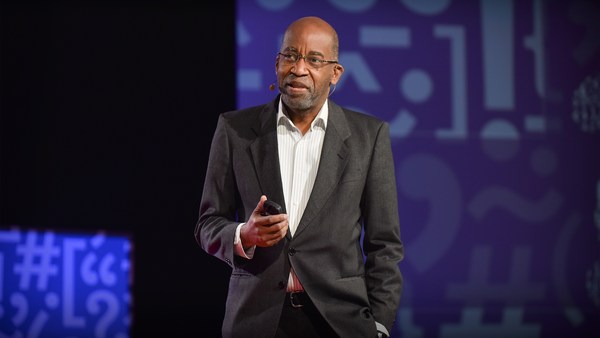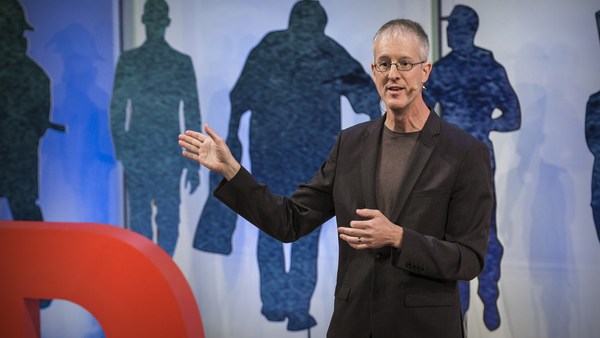In the fall of 1909, W.H. Simpson and his wife Daisy purchased a lot in the Prospect Park neighborhood of Minneapolis. They would be the second black family to move into the neighborhood. But before they could even begin construction on their new home, they were confronted by a white mob. The mob spokesperson told the family, in no uncertain terms, that their new neighbors would take any means necessary to secure the Simpsons' removal. This confrontation, which the Minneapolis Tribune referred to as a "Race War," failed to terrorize the Simpsons into submission. They did continue to live in the neighborhood. But it did mark a turning point in the history of Minneapolis. You see, Minneapolis, like many northern cities, actually, wasn't always segregated. And this may come as a surprise to some of you, but in the early 20th century, The City of Lakes was actually a fairly integrated place. In 1910, the part of the city with the highest percentage of black residents is Near North Minneapolis, and it's only about 15% African American. And in addition, there are actually emerging integrated communities in places like the south shores of Lake Harriet, around Lake Nokomis, along the Mississippi River corridor, and sprinkled throughout Northeast Minneapolis. But by mid-century, this picture looks radically different. Those black families, down by Lake Harriet and Lake Nokomis? All gone. Same story with the black families who were living along the Mississippi River. In fact, by 1940, there is no census district in Northeast Minneapolis containing multiple black families. And it's important to note that during this period, the overall number of African Americans is actually staying fairly consistent. In 1910, one percent of the city is black. By 1950, it's increased, but only slightly, to 1.5 percent. So this concentration that you see if you look at this 1940 map, we actually have majority of minority neighborhoods by 1940. This concentration is not the result of an influx of new African Americans into the city. Rather, this is the result of taking an existing integrated city and forcing African American families out of these integrated neighborhoods and concentrating them into small pockets of Minneapolis. Minneapolis simply was not always segregated. And when the Simpsons moved in to the Prospect Park neighborhood, they had no idea of knowing that the city was on the cusp of a massive racial reordering. In the early 20th century, racist ideas are beginning to be deployed in new ways. And this notion that the quality of a neighborhood depends on the racial category of that neighborhood's occupants, this idea begins to spread like wildfire throughout the country. It's embraced by virtually all white people. White homeowners, politicians, bankers, real estate developers, you name it. They came up with all kinds of new ways to inscribe this racist idea into the built environment. To put it simply, racial residential segregation was becoming the new normal. And this profoundly altered the urban landscape. Some of you might have heard of "redlining," the federal practice of denying conventional mortgages to non-white neighborhoods. And some of you might have also heard of discriminatory lending or real estate steering. But decades before the federal government began redlining American cities, and long before the real estate industry formally adopted racism and put it in its code of ethics, which did happen, something called the racial covenant was already remaking cities across the country. Now, let me explain. Racial covenants are legal tools that were used by real estate developers in the 19th and 20th century to prevent people of color from owning or even occupying property. Often just a few lines of text, these restrictions were inserted into warranty deeds across the country. This is what they sound like: "No persons of any race other than the Aryan race shall use or occupy any building or any lot." "... neither shall said property be transferred or leased to a colored person." "The said premises shall not at any time be sold, conveyed, leased, or sublet, or occupied by any person or persons who are not full bloods of the so-called Caucasian or White race." And just to point out, these examples I just read, are all from right here, in Minneapolis, and the rest of Hennepin County. This language is incredibly racist, shockingly racist, but it's also incredibly powerful. It determined where people could live. You see, when a racial covenant is added to a warranty deed, when it's attached to a piece of property, this restriction tracks with the land indefinitely. So what this means in practice? For example, say I buy a house in, I don't know, South Minneapolis, in 1910, and I throw one of these racial covenants onto it. Ten years later, I sell this house to another white person. Ten years after that, they sell it to another white person. Ten years after that, they sell it to somebody who isn't white. This person, even though I've never met them, has breached the covenant. They lose the house, any equity they've accumulated, and the property reverts to me, the initial granting party, the person who first attached the covenant to this particular piece of land. If I'm dead at this point, the property would revert to my heirs or assigns. So once one of these restrictions gets into the property record, it's effectively there forever. Now, in the 20th century, civil rights advocates and leaders rightly saw racial covenants as one of the biggest barriers to black stability and prosperity in the United States. In fact, the NAACP made fighting racial covenants one of its top priorities. But mapping racial covenants, figuring out exactly where these things are located, has proven remarkably challenging. Nobody has ever built a comprehensive map or list or database of racial covenants for an urban area in the country, at least until now. I'm one of the co-founders of the Mapping Prejudice Project, located at the Borchert Map Library at the University of Minnesota. And we are building the first comprehensive spatial database of racial covenants for an American city. This is the result of our work so far. This is a time-enabled map that shows the spread of racial covenants throughout Minneapolis and the rest of Hennepin County in the first half of the 20th century. Each one of these blue dots denotes an individual piece of property that was reserved exclusively for the use of white people. And while there's already a lot of blue on this map, if anything, this is grossly underestimating the total amount of restricted land in Minneapolis and the surrounding suburbs. We've mapped over 15,000 racial covenants so far, and we expect to add at least 15,000 more by the time our project is completed. So if any of you live in Hennepin County and you don't see a blue dot on your house, you cannot assume that your neighborhood was free from these racial restrictions. We do know that racial covenants first came to Minneapolis in 1910, just a few months after the Simpsons moved in to Prospect Park. By the 1930s, they're standard practice. The majority of new developments after 1930 do contain these racial restrictions. They were finally made illegal, and these are illegal now, as part of the Fair Housing Act of 1968. Although, there was a separate Minnesota law in the mid '50s that made them illegal locally slightly earlier. But for the majority of the 20th century, racial covenants were utilized across the United States. And they were devastatingly effective. Now, people of color have long known that racial segregation is a defining feature of urban America. I mean, this is not exactly a ground-breaking insight on my part. But what we're doing with Mapping Prejudice is determining and figuring out exactly how our cities became segregated in the first place and how racist ideas became spatial practice. So why is this happening? Why do covenants start taking over in Minneapolis and really, the rest of the country, in the early 20th century? A lot of it has to do with how real-estate developers start using racism to sell land. Racial covenants spoke to white homeowners' fears about their property values. And developers were quick to capitalize this, and used racial covenants as promotional tools. For example, the Delphian Heights addition to Minneapolis touted its lots as being both "beautiful" and "highly restricted." This addition in the Lake of the Isles neighborhood of Minneapolis actually printed the language of the covenant right in the newspaper ad. "... shall not at any time be conveyed, mortgaged, or leased to any person or persons of Chinese, Japanese, Moorish, Turkish, Negro, Mongolian, Semetic, or African blood or descent." And these restrictions aren't just being used to keep existing white neighborhoods white, although that's certainly part of it. They're also being used to ensure that all new development is reserved, exclusively really, for the use of white people. Consider this photograph. It's an aerial photograph of South Minneapolis from 1938. And each one of these red polygons denotes an individual lot that was racially covenanted prior to this photo being taken. And as you can see, land is being racially restricted before any other development takes place. These covenants are going in before the roads, before the construction of new houses. They even predate the sewers in some parts of the city. The first thing developers are thinking about during this period is race. And this practice ensured that Minneapolis and other cities across the country, as they expanded in the 20th century, this expansion was solely to the benefit of white people. Racial covenants aren't just determining where people can and cannot live, they're also determining who can accumulate wealth through home ownership. Racial covenants took an integrated city and turned it into a highly segregated one, by forcing African Americans out of integrated communities, and concentrating them in a few pockets of the city. Well, those pockets, they were then red-lined by the federal government beginning in the late 1930s. Once an area is red-lined, this means that there is no bank in the country that will give you a conventional mortgage if you attempt to purchase in that area. Pretty much your only option to buy in a red-lined community is predatory lending. So if you're black in the first half of the 20th century here in Hennepin County, buying a house is almost impossible, right? Large sections of the city are covenanted. It's against the law for you to live there. Other sections of the city have been red-lined. It's impossible for you to get a good financial package to buy into that area. And when black families are able to surmount these obstacles, which are pretty big obstacles, they’re often met with white violence. This is what happened to the Lee family, a black family, in 1931, when they purchased a house in South Minneapolis. Within days of moving in, thousands and thousands of white neighbors surrounded the home. They vandalized the house, they killed the family’s pets. It became violent enough that their daughter, Mary, required a police escort just to safely get to kindergarten. In fact, Mr. Lee, who was a World War One veteran, had to call in his army buddies to form an armed perimeter around the home just to keep this surging white mob at bay. So when you consider the severity of the barriers to African Americans purchasing homes during this period, it’s not surprising that a massive gap has emerged between white and black homeownership rates in the city of Minneapolis. In fact, a recent study by the Star Tribune, using the 2010 census, found that of the hundred largest metropolitan areas in the country, Minneapolis has the largest gap between black and white homeownership rates. Over 75% of white families in the city: they own the home that they occupy. Less than 25% of black families own the home that they live in. While racial covenants themselves have been illegal now for decades, we are still very much living with the legacies of these historic practices. This is a map that shows where African Americans are living in Minneapolis today. Again, this one’s based off of the 2010 census data, and I've overlaid historically covenanted lots in red. And as you can see, the areas of the city that were historically covenanted, these are still by far the whitest parts of the city today, and they’re also some of the wealthiest. Black neighborhoods, on the other hand, have been subjected to systematic disinvestment. They weren’t just ignored or passed over. They were actively destroyed by things like urban renewal, infrastructure projects, heavy industry, and Superfund sites. One of the ways these historic black communities were destroyed specifically was through the use of freeways. So we’re going back in time now. This is 1940, showing where African Americans were living, and I've overlaid subsequent freeway projects on top. And, as you can see, some of the - Now I need to explain this slide, right? (Laughter) Historic black communities were obliterated by freeway projects. Black neighborhoods in Near North, Minneapolis, the east end of downtown, along the Hiawatha corridor in South Minneapolis, they’re all devastated by these freeway projects. In fact, you might notice how 35W makes a small jog before linking up with 94, right there in the middle of the map. You can see where this is going. In the original planning documents, 35 was actually supposed to go straight here, but they realized, kind of at the last minute, "Well, if we go straight, we're gonna hit the Minneapolis Institute of Arts, and that’s something worth protecting.” So at the last moment city planners decided to reroute the freeway several blocks east, right through a black neighborhood. Racial covenants show us how structural racism was baked into the fabric of Minneapolis. But what are we supposed to do with this knowledge? Well, the first thing is we - and this is a collective "we" - have to confront and acknowledge the legacy of racial covenants and redlining, really a history that’s been intentionally forgotten. (Applause) Minneapolis, like many American cities, was not always segregated. And our contemporary racial disparities are not rooted in poor individual choices, or cultural differences, or individual pathologies. They’re rooted in structural racism - (Applause) And that racism was made material through instruments like racial covenants. These historic wrongs demand restitution. But the details of these remedies should be left to the people who have been living with the consequences of racial covenants for decades. They should be determined by the people who live today in neighborhoods with high asthma rates, food deserts, and elevated levels of police violence. And in order to turn these community-derived remedies into political action, we - again, collectively "we" - need to acknowledge and confront the full extent of the problem. So think about your own role in all of this. Do you live in a covenanted neighborhood? Did you grow up in one? Who are your neighbors? Who’s missing? Who owns and who rents? Does your neighborhood today reflect the diversity of the city? And if it doesn’t, what are you going to do about it? Thank you. (Applause and cheering)





